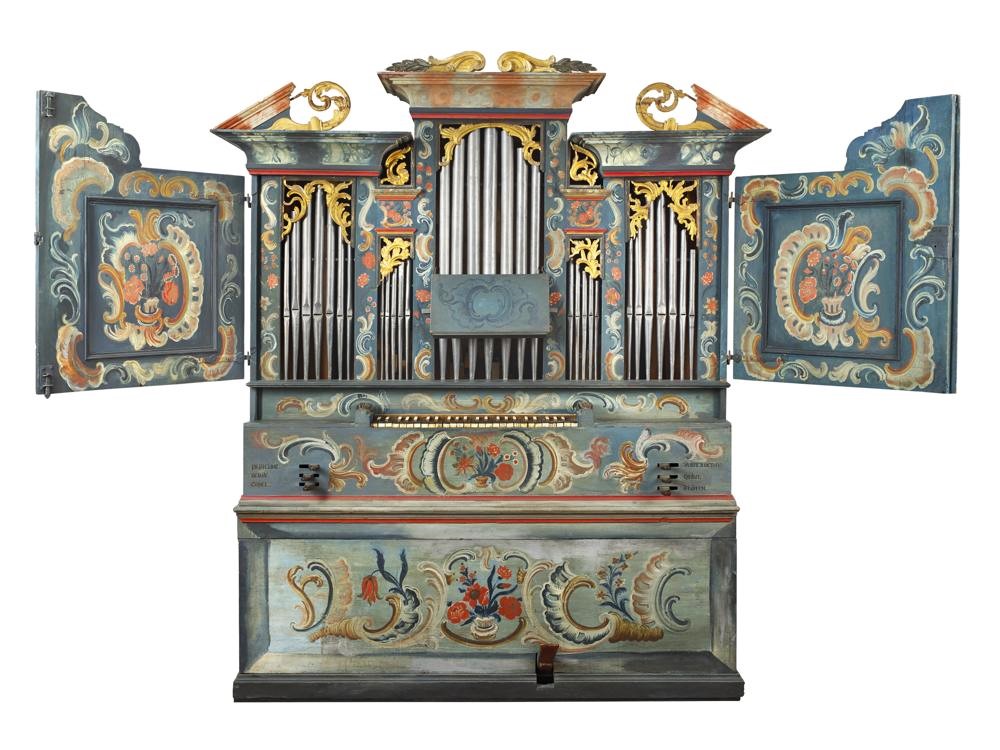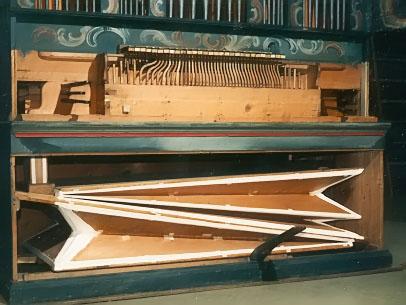Vermillion, SD, National Music Museum (Josef Loosser Pipe Organ)
| Builder | J. Loosser |
|---|---|
| Year | ca. 1786 |
| Period/Style | Baroque |
| Stops | 6 |
| Keyboards | 1 |
| Keyaction | tracker/mechanical |
The 1786 Josef Loosser organ, housed in the National Music Museum at the University of South Dakota in Vermillion, South Dakota, is a historically significant piece restored to its former glory. This Swiss-made instrument features a single manual with six stops, six ranks, and 294 pipes, providing a unique insight into 18th-century European organ craftsmanship. The organ’s compass extends from C to c3 (49 notes), and it is built with a mechanical key and stop action. Its pipes are a mix of metal and wood, with the bass sections typically made of wood, highlighting the traditional construction techniques of the era. The facade of the organ showcases the artistry common in the Toggenburger valley, with a pine case painted in the regional style.
The organ has a fascinating provenance, having been purchased in 1990 from Martin Goetze and Dominic Gwynn of Nottinghamshire, England, who restored it in 1988. Before its restoration, it belonged to Julian Berkeley of Ramsdell, England, and was previously owned by Francis Lloyd, who inherited it from his mother, Lady Berkeley. Lady Berkeley, also known as Molly and formally Mary Emlyn Lloyd, daughter of John Lowell from Boston, Massachusetts, kept the organ in a music room in her house in Assisi, Italy—a room that was once the church of San Lorenzo. This rich history adds layers to the organ’s cultural and historical significance, reflecting its journey through various hands and lands, ultimately enhancing its value as an educational and musical treasure.
The organ has a fascinating provenance, having been purchased in 1990 from Martin Goetze and Dominic Gwynn of Nottinghamshire, England, who restored it in 1988. Before its restoration, it belonged to Julian Berkeley of Ramsdell, England, and was previously owned by Francis Lloyd, who inherited it from his mother, Lady Berkeley. Lady Berkeley, also known as Molly and formally Mary Emlyn Lloyd, daughter of John Lowell from Boston, Massachusetts, kept the organ in a music room in her house in Assisi, Italy—a room that was once the church of San Lorenzo. This rich history adds layers to the organ’s cultural and historical significance, reflecting its journey through various hands and lands, ultimately enhancing its value as an educational and musical treasure.
| Manual |
|---|
| Copel 8' |
| Principal 4' |
| Flöten 4' |
| Ocdav 2' |
| Qvint 2 2/3' |
| Subterocdav 1' |
No Video/Audio samples available.
https://beta.pipeorgandatabase.org/instruments/2392
 Pipe Organ Map
Pipe Organ Map
